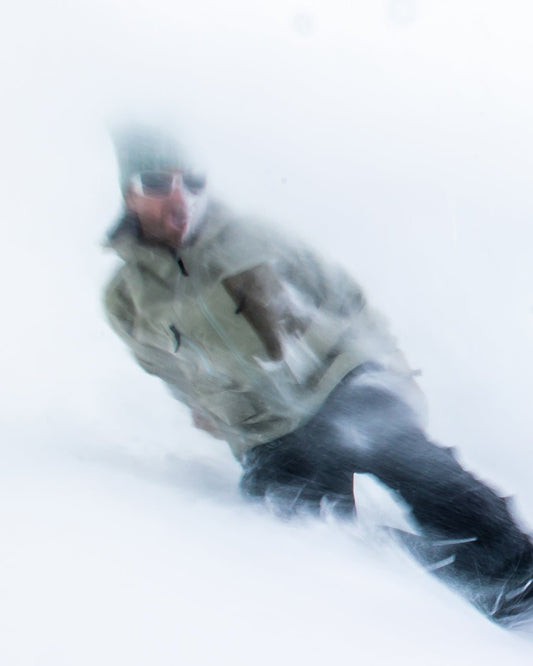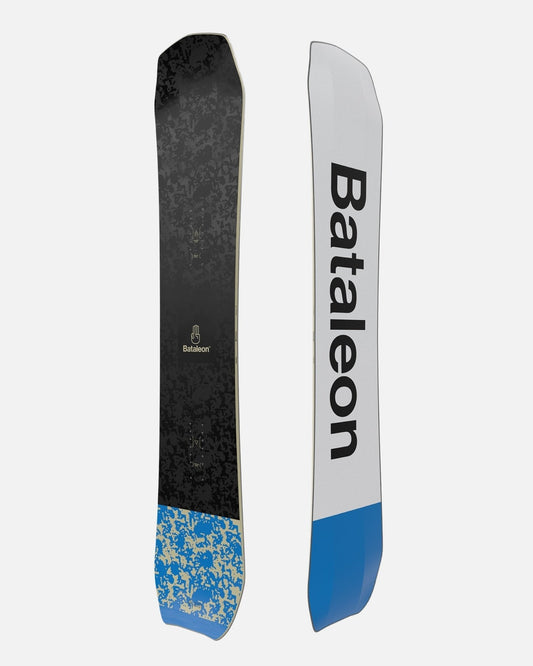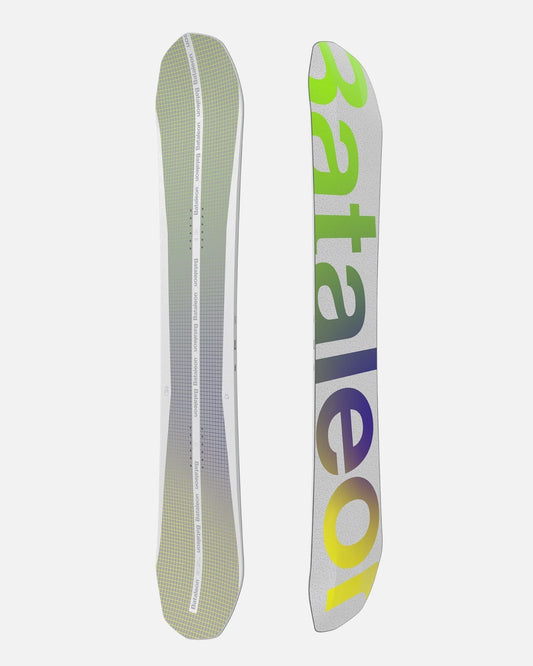As the years went by and the tricks got bigger and more creative, the gear we use underwent a similar progression. Early freestyle snowboards were identikit twin-tips aimed squarely at the park and pipe; these days – with the help of technology like 3BT – you’re just as likely to see riders taking their tricks to the backcountry, or slaying a handrail downtown.
What is a freestyle snowboard?
When Terry Kidwell launched a backside air out of the Tahoe City halfpipe in the mid 1980s, he changed snowboarding forever. What had once been the bastard child of surfing and skiing was now cross-pollinating with the burgeoning Californian skateboard scene. Freestyle snowboarding was born.
As the years went by and the tricks got bigger and more creative, the gear we use underwent a similar progression. Early freestyle snowboards were identikit twin-tips aimed squarely at the park and pipe; these days – with the help of technology like 3BT – you’re just as likely to see riders taking their tricks to the backcountry on a Goliath, or slaying a legit handrail downtown on a Wallie. Heck, Tyler Chorlton pops cab 5’s better than you on his fully directional Party Wave.
So freestyle itself means different things to different people, but the basic requirement of any freestyle snowboard remains the same. It needs to get you airborne.
Let’s look at how.
How are freestyle snowboards designed?
-
Shape
The classic freestyle snowboard shape is a true twin. This means the nose and tail look exactly the same, like a mirror image. The insert holes on a twin are centred, so that when you fix the bindings on there is no difference in length between the nose and tail. Examples of twin snowboards within the Bataleon range are the Evil Twin or the Distortia.
The chief advantage of twin tips is that they offer exactly the same performance in either direction, so you can ride backwards (aka ‘switch’) really easily. Want to land a 540? Or do a switch 50-50 on a rail? At least half the tricks in the book are easier to do on a twin shaped board.
The main drawback of true twin freestyle snowboards is that they’re not optimized for carving in your normal stance (which, if we’re honest, is where most of us spend the majority of our time). Secondly, it won’t be as easy to ride in powder as a directional board.
This is where the ‘directional twin’ shape comes in. Directional twins are almost the same in either direction. They have a nose and tail that share the same basic outline, and they have a twin sidecut and contact area (in other words, the area beneath your feet offers identical performance going forwards or switch) BUT the nose is slightly longer. At Bataleon, this difference in length is 1cm.
Directional twins like the Goliath , Fun.Kink or Feelbetter are still great for doing tricks on, but they offer a little more all-mountain freestyle performance. The longer nose will be more stable at speed and float better in powder, which is perfect if you enjoy hitting backcountry kickers or just riding different terrain on the same board. For a more in-depth look at how different snowboard shapes work, check out this article.
As we mentioned earlier, though, Bataleon’s team riders are increasingly getting creative on some of our more radical directional shapes. So freestyle snowboarding isn’t limited to true twins and directional twins.
-
Flex
Freestyle snowboards are typically softer than freeride models. This softer flex makes it easier to load an ollie, or press the nose, and the board is generally easier to manipulate beneath your feet at lower speeds. This is obviously ideal for the park, particularly on smaller jumps and rails.
A soft flex is also more forgiving; if you lose your balance or find yourself more parallel to the slope than you should be (for instance you’ve under-rotated a jump) then you are less likely to catch an edge. A stiff flex, by contrast, feels inherently twitchier.
Many of our park and street-focused boards, like the Wallie or the Disaster, feature a mellow flex rating for this reason. But we’ve also applied a softer flex than you might expect to some of our directional shapes – like the Whatever and the Party Wave. This makes them really accessible and fun to ride – in fact don’t be surprised if you find yourself busting out a backflip on what you thought was your powder board!
Of course, if you’re a heavier or more aggressive rider then you might prefer a freestyle snowboard with a stiff flex. Firmer boards like the Turbo offer snappier response, are more stable at speed and can absorb heavier landings without buckling. Think: go big or go home!
Whatever your preference, a freestyle snowboard needs to boast plenty of pop to get you off the ground. At Bataleon, we use carefully selected wood cores and carbon rods called SuperTubes to boost ollie power. Check out this deep dive on snowboard flex to find out more.
-
Length & Width
When you want to chuck some tricks, it helps if you’re not strapped to a huge board. Why? First, longer boards are heavier (so harder to get into the air) and secondly they’re harder to spin. Freestyle snowboards are therefore typically a little shorter, favoring lightweight maneuverability over pure speed or float.
The exact length you should choose for any given model depends on your weight, and your riding style. Are you sticking purely to the park? Or will you be taking this board off-piste too?
Freestyle snowboards also tend to be a little bit wider, which makes them more stable. This helps you lock onto rails and land jumps (and is obviously a bonus if you have big feet). In tandem with an aggressive sidecut radius, a wide-ish freestyle board will still tend to offer short, sharp turns (great for setting up tricks) rather than drawn out carves.
Wanna nerd out? We’ve put together a more in-depth explainer on snowboard width and sidecut here.
-
Profile & 3BT
When it comes to freestyle snowboards, some manufacturers have taken to using reverse camber (rocker), flat bases or even hybrid profiles. The theory is that you’re less likely to catch an edge during a trick.
The downside to these alternative profiles is that they don’t offer the same edge control or ‘spring loaded’ ollie power as a classic camber. And let’s be clear: when you’re carving up a transition or launching off the lip (in other words, doing some freestyle) you still need that performance.
Bataleon solved this problem almost 20 years ago with the invention of Triple Base Technology (3BT). 3BT combines a standard camber from the nose to the tail with uplifted areas near the wide points. This raises the critical part of the edge off the snow when you’re not actively engaging a turn – so you’re way less likely to hook-up and ragdoll on that accidental 270.
3BT will take your buttering game to the next level but, unlike with rocker, it doesn’t feel ‘skiddy’ when moving from edge to edge. In fact it carves more efficiently than standard flat bases and offers tons of pop.
Over the years we’ve refined our three-dimensional shapes depending on the style of board. Bataleon’s park and street-oriented freestyle snowboards (like the Wallie and the Blow) feature a less aggressive ‘low’ camber that provides a more stable platform for rail tricks. Our all-mountain freestyle snowboards deploy a ‘mellow’, ‘medium’ or ‘dynamic’ camber depending on where you prefer the balance to lie between relaxed and responsive.
Alongside this, we’ve developed five variations on 3BT, including three that are aimed at freestyle riding. Jib 3BT – seen on the Blow, Disaster and Wallie – features our widest centrebase, for maximum stability when jibbing and pressing.
Twin 3BT pairs a wide centrebase with a shallow uplift angle that begins outside the bindings. It’s a little less rail-focused than Jib 3BT but still prioritizes a solid, planted feel that’s great for the park. You’ll find it on the Whatever the Fun.Kink and the Evil Twin amongst others.
Freestyle 3BT is a versatile design we use on many of our directional twin models including the Chaser and the Goliath. The sidebase and centrebase are equally proportioned, with a medium uplift angle that tilts the balance towards all-mountain performance.
Conclusion – What is the Best Freestyle Snowboard?
These days, there’s no such thing as a one-size-fits-all freestyle snowboard. To choose the right model for you, first decide where you’re going to be busting out the tricks you’ve been dreaming about. In the park? On the street? Or across the whole mountain?
The answer to this question will point you towards a shape – usually twin or directional twin, but if you’re into backcountry freestyle then you might opt for a modern directional silhouette.
From here, you can narrow down the selection based on your flex and profile preferences. Softer flex, mellower camber and a wider 3BT centrebase make for relaxed and jibby vibes, while a stiffer flex, more pronounced camber and narrower 3BT centrebase will suit more aggressive freestyle riders.
Frequently asked questions about freestyle snowboards
FAQ
I want to learn more tricks aside from cruising the resort, which snowboard should I purchase?
Depending on your riding style and skill level, models like the Goliath, Evil Twin, and Push Up could be suitable boards to have a look at. These models offer playfulness for learning tricks on various riding levels while keeping stability for riding the entire resort.
How do Bataleon snowboards help my freestyle/park riding compared to regular camber snowboards?
The major benefits of 3BT in a freestyle or park setting are a more catch-free tip and tail feeling, easy turn initiation for inbetween features, and the benefit we talk about most often, is our ability to refer to 3BT as a ‘get-out-of-jail-free’ card, helping to landing tricks where your precision might not be 100%.
Buyers Guide
View all-
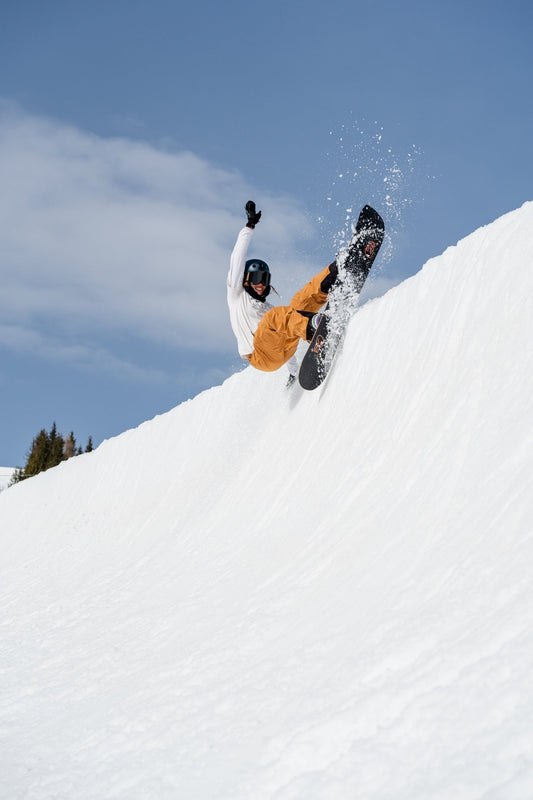
-
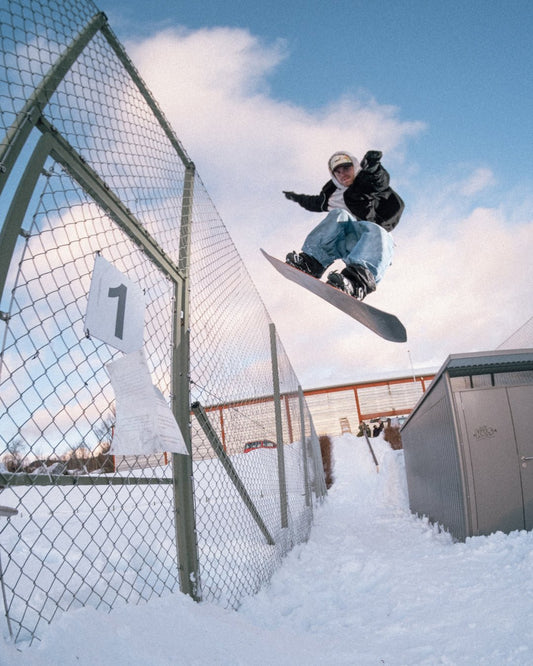
Bataleon's Best Freestyle Snowboards
Up your game in the park, on the street or in the backcountry. Check out our freestyle snowboards.
Bataleon's Best Freestyle Snowboards
Up your game in the park, on the street or in the backcountry. Check out our freestyle snowboards.
-
